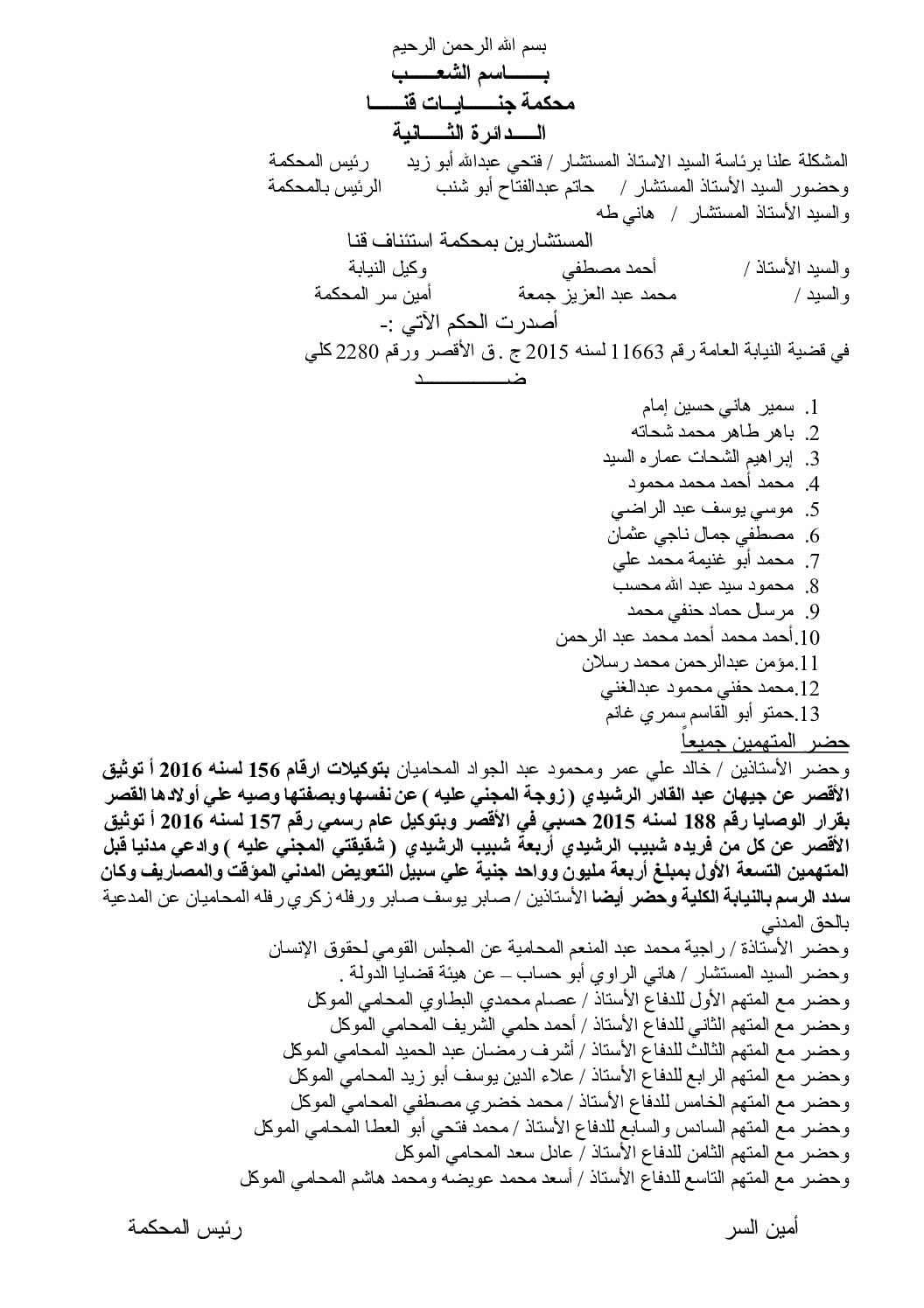Debts|New Reports on Norwegian Debt Review to Egypt
Sovereign debt, resulting from borrowing by states, is one of the chronic problems of the global economy. Development loans, meaning those intended for financing development projects in the Third World, are usually advertised and promoted as tools for accelerating development and supporting growth in those countries. In practice, however, what occurs is quite the opposite. The accumulation of debt, as a result of those loans, leads to restricting the ability of Third World governments to direct the appropriate amount of already limited resources into the investments necessary to push through with the development process. Servicing this debt carves out a large portion of public spending, to pay back the premium and the interest. Egypt, in particular, resources directed towards servicing the public debt exceeds makes up more than one third of total spending in the state budget.
A major component of sovereign debt-related problems are caused by what is termed “irresponsible lending.” This indicates that lenders did not commit to clear and specific criteria, which would guarantee that their loans would be invested in implementable, operational, and meaningful projects and that they result in benefits to the people of the borrowing nations, equal to the incurring debt repayment. The matter is further complicated by the political reality of the majority of states in the Third World, where people suffer under authoritarian, corrupt, and oppressive regimes. This situation, combined with the “irresponsible lending” phenomenon, results in what is termed “bad debts,” which are debts accumulated by developing or poor states, without any real benefit to their people or advancing their development. However, they contributed to inflating the pockets of officials in those countries and directing a large portion of the loans to fund the instruments of repression of their people.
Under pressure by international and local civil society organizations (NGOs), several international donors are moving towards the announcement of tougher principles for lending, in the aim of mending the massive flaws in lending operations in the Third World. However, these entities are still avoiding a comprehensive review of loans they have already provided, to reveal the amount of “irresponsible lending” and “bad loans,” since this might entail dropping some of those debts and exposing donor entities to many problems. In the cases where these entities are actually governments of donor states, they will also be subject to political accountability [in their own countries] for wasting public funds.
For this variety of considerations, initiatives undertaken by donor countries to conduct a comprehensive review of their development loans should be considered a remarkable step that deserves attention. First, this will form a precedent, which needs to be highlighted in order to put pressure on the rest of the donors to follow suit. Second, it will enable the creation of a general model for debt auditing, which could be used by borrowing countries that need to get rid of the accumulated debt burden, especially those with a legacy of authoritarian and corrupt rule.
In this context, the Egyptian Center for Economic and Social Rights (ECESR) is presenting two reports for reviewing development loans provided by the state of Norway to the Third World, including Egypt. The first report was initiated by the government of Norway and prepared by Deloitte; it includes a systematic review of loans provided by Norway to Third World countries. The second report was prepared by the Norwegian Alliance to Drop the Debt and consists of a detailed study of three indebted countries: Indonesia, Egypt, and Myanmar. ECESR assisted in the section related to Egypt and was represented by Mahinour al-Badrawi in the launching of the report at a conference attended by Norway’s foreign minister and a delegation of Deloitte, which had prepared the governmental report.
The report on Egypt examined in details two examples of Norwegian lending to Egypt, the financing of a project to construct a shipping container loading and unloading dock in Port Said (between 1980 and 1984) and the Norwegian government’s purchase of Egyptian treasury bills. The report calculates the total debt owed by Egypt to Norway to be 25.2 million Kroners (US $4.63 million – 28.2 million Egyptian Pounds) and considered it to be a model of problems inherent in loans provided in the form of credit guarantees for exports from the lending company.
In this type of loans, the lending state funds the borrowing state’s purchases of services or goods produced in the lending country, related to the implementation of a particular project. These loans are assumed to be mutually beneficial to both countries, allowing the borrowing state to stimulate its industrial and services sector. Yet the report finds fault in this type of loans, since they gave priority to the interests of Norwegian companies, at the expense of development in the borrowing country.
The report illustrates various sides of the negative impacts of the project and the manner in which it was implemented. This included a comparison between jobs created by the project and those which were lost. It also demonstrated the unfair terms of the contract, which imposed the import of 70 percent of the project’s needs from Norwegian companies and limited the amount of Egyptian products to 15 percent, which was the actual contribution of Egypt in the project costs. This meant that the Norwegian loan did not finance the purchase of a single local product.
On the other hand, the project highlighted problems related to lending through the purchase of treasury bills from the borrowing state, considered to be direct and public financing that is not restricted to particular projects. In the case of Egypt, this type of loans directly contributed to financing the Egyptian regime during the era of deposed president Hosni Mubarak. It was at a time of increasing repression mounted by that regime against its political opponents and protesting workers, which spent a great amount of its funds on its security forces.
In addition to providing detailed information concerning Norway’s loans to Egypt, by presenting these two reports, ECESR aims to propose them as models for reviewing loans, where governments and civil society organizations join efforts in revealing the truth of the matter and providing decision makers with accurate information.
Despite the discrepancies between the two reports, the Norwegian government expressed great interest in details revealed by the shadow report, which were overlooked by the government report or where there was divergence in the evaluation. This sort of cooperation with civil society should be emulated by the Egyptian government.
More importantly, although Norwegian loans represent a small portion of Egypt’s total debt, they still reveal several key problems inherent in remaining foreign loans owed by Egypt. This should impel the Egyptian government to begin a comprehensive program for reviewing the country’s foreign debt, with the assistance of local and international CSOs. This would allow the dropping of a large portion of the debt, accumulated during the successive governments of the Mubarak era, considered to be “bad debt.”
There is no doubt that dropping these loans will lift a large part of the heavy burden imposed on the Egyptian budget and liberate a part of those resources, to be invested in stimulating development and improving public services, which are urgent and indispensable for Egypt’s economy and society at this stage.

